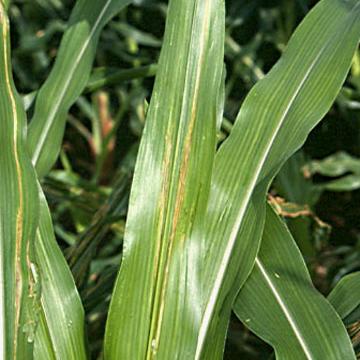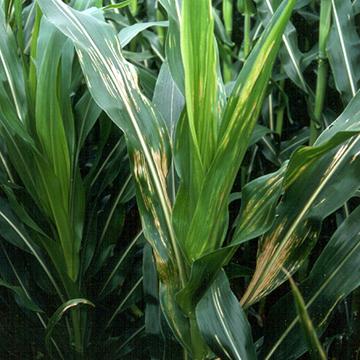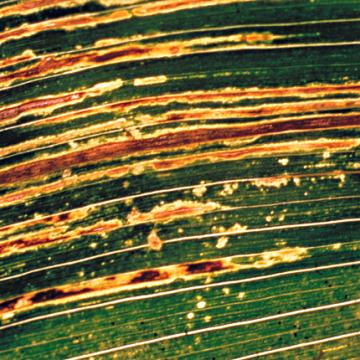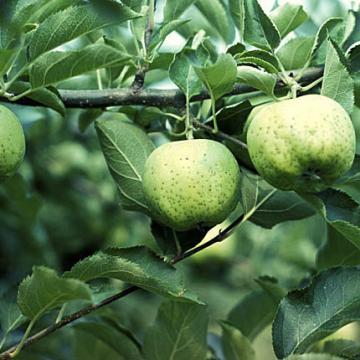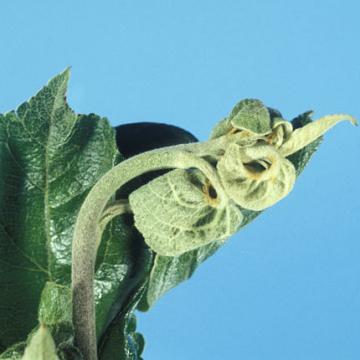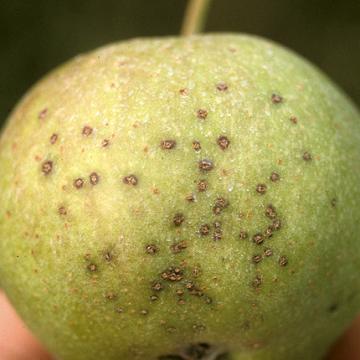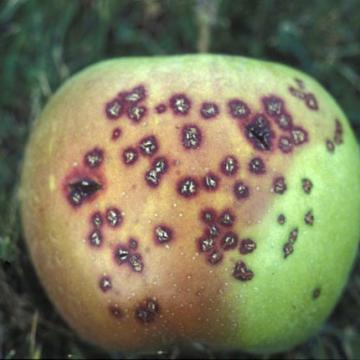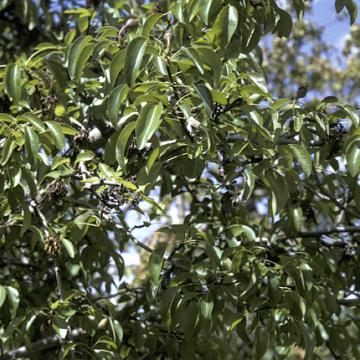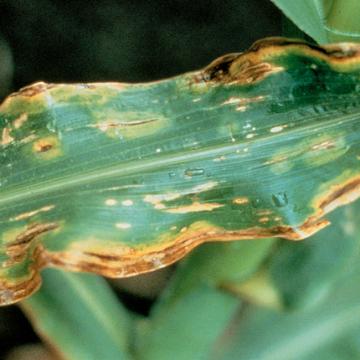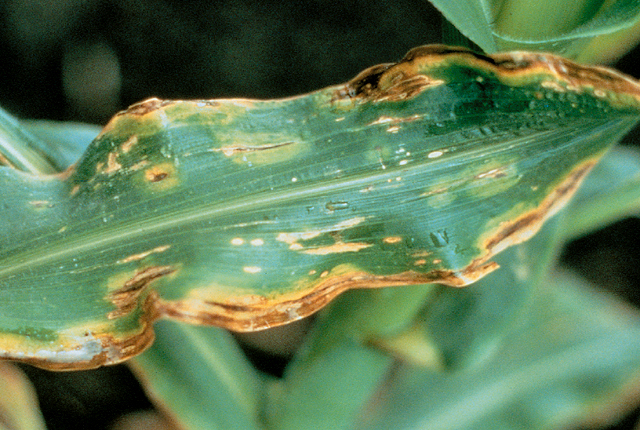DISEASE: Bacterial stripe
HOST: Corn (Maize)
Early stage of bacterial stripe.
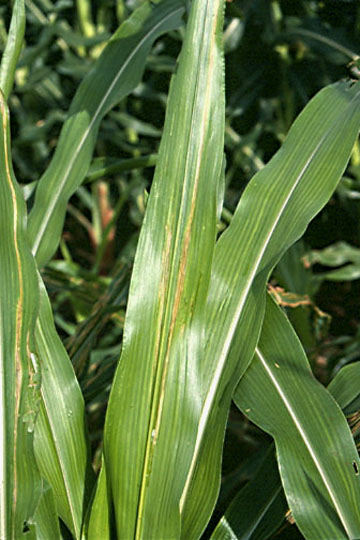
Bacterial stripe | Corn (Maize)
DISEASE: Bacterial stripe
HOST: Corn (Maize) (Zea mays)
PATHOGEN: Burkholderia andropogonis
PATHOGEN SYNONYM: Pseudomonas andropogonis
SOURCE: A. Alvarez
DISEASE: Bacterial stripe
HOST: Corn (Maize)
Corn leaves with amber- to olive-colored, water-soaked translucent stripes.
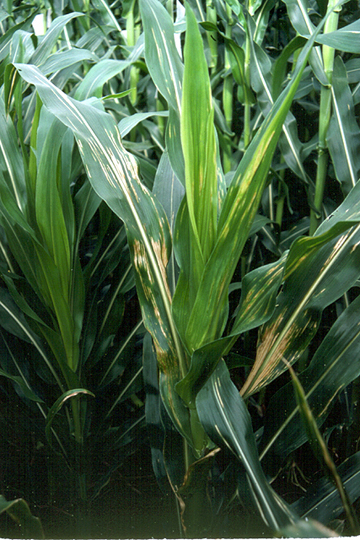
Bacterial stripe | Corn (Maize)
DISEASE: Bacterial stripe
HOST: Corn (Maize) (Zea mays)
PATHOGEN: Burkholderia andropogonis
PATHOGEN SYNONYM: Pseudomonas andropogonis
SOURCE: M. Shurtleff
DISEASE: Bacterial stripe
HOST: Corn (Maize)
Corn leaves with yellow-brown to reddish stripes, 2 to 3 mm wide.
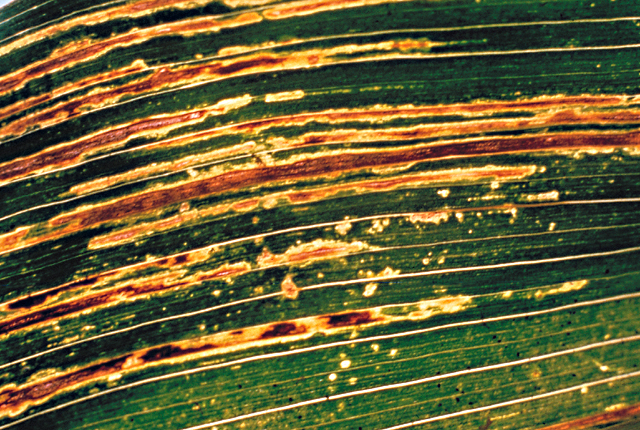
Bacterial stripe | Corn (Maize)
DISEASE: Bacterial stripe
HOST: Corn (Maize) (Zea mays)
PATHOGEN: Burkholderia andropogonis
PATHOGEN SYNONYM: Pseudomonas andropogonis
SOURCE: APS
DISEASE: Blister spot
HOST: Apple
Fruit with water-soaked spots.
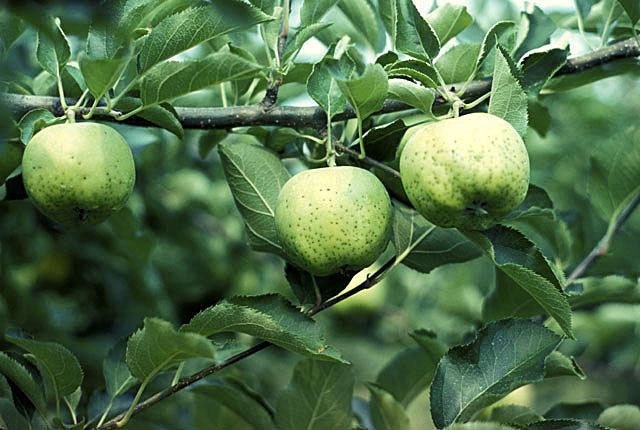
Blister spot | Apple
DISEASE: Blister spot
HOST: Apple (Malus domestica)
PATHOGEN: Pseudomonas syringae pv. papulans
SOURCE: T. Burr
DISEASE: Blister spot
HOST: Apple
Water-soaked blister spots on leaves of blighted twig.
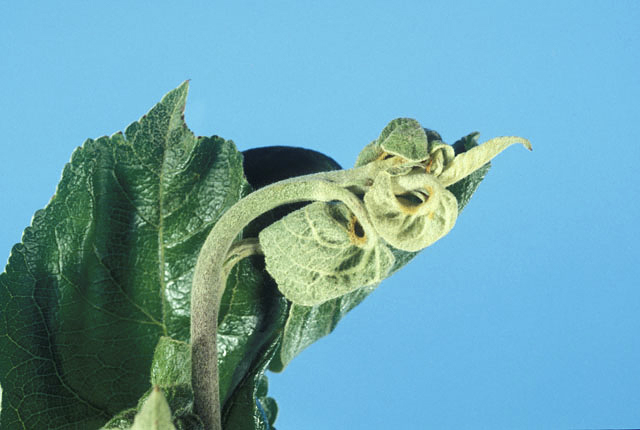
Blister spot | Apple
DISEASE: Blister spot
HOST: Apple (Malus domestica)
PATHOGEN: Pseudomonas syringae pv. papulans
SOURCE: T. Burr
DISEASE: Blister spot
HOST: Apple
Apple with brownish blister spots.
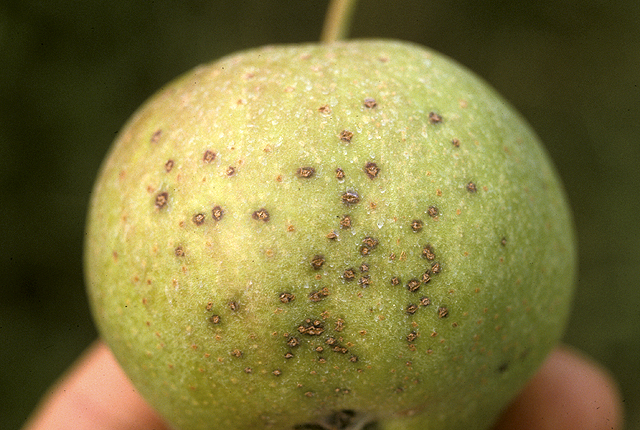
Blister spot | Apple
DISEASE: Blister spot
HOST: Apple (Malus domestica 'Mutsu')
PATHOGEN: Pseudomonas syringae pv. papulans
SOURCE: S. Thomson
DISEASE: Blister spot
HOST: Apple
Late stage of blister spot. The purplish black lesions are associated with lenticels and stomata.
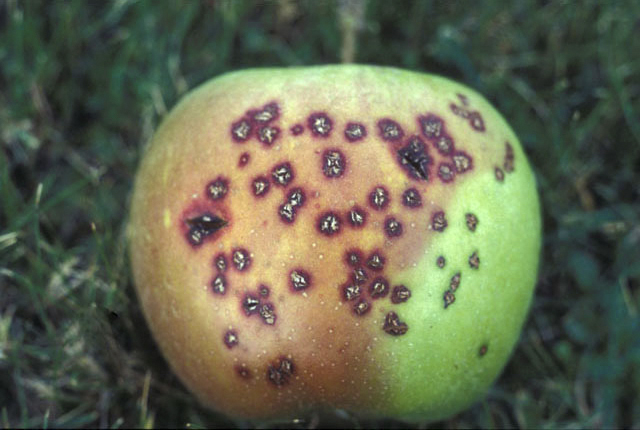
Blister spot | Apple
DISEASE: Blister spot
HOST: Apple (Malus domestica 'Crispin')
PATHOGEN: Pseudomonas syringae pv. papulans
SOURCE: T. Burr
DISEASE: Blossom blast
HOST: Apple
Many dead, shriveled flowers and young shoots. It differs from fire blight, with infections being relatively localized with the appearance of being "blasted".
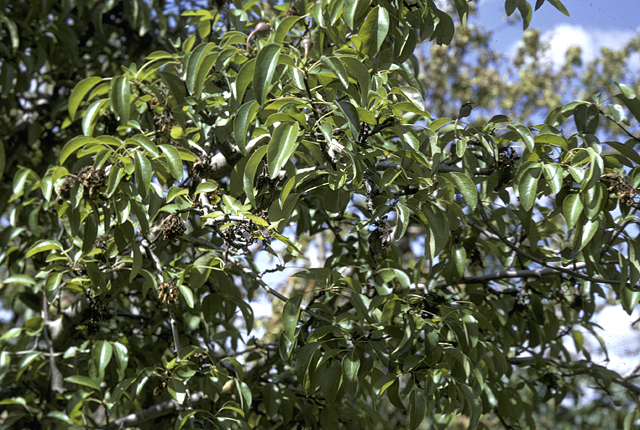
Blossom blast | Apple
DISEASE: Blossom blast
HOST: Apple (Malus domestica)
PATHOGEN: Pseudomonas syringae pv. syringae
SOURCE: M. Schroth


